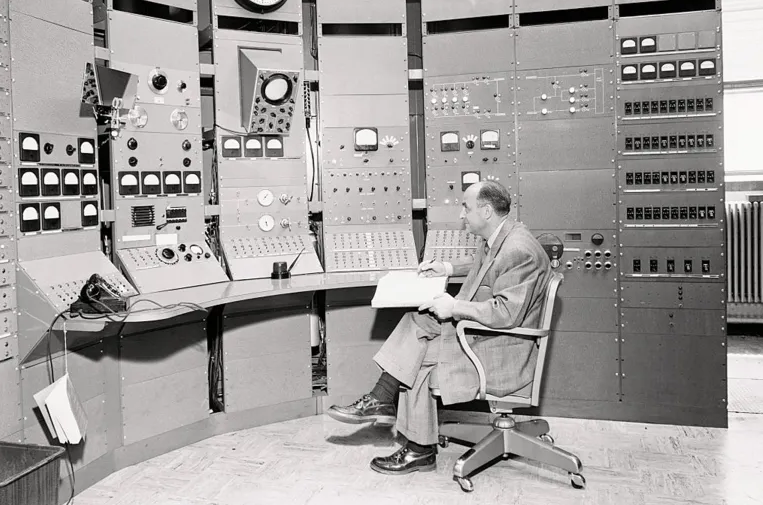Enrico Fermi
Fermi is known for developing the world’s first nuclear reactor, and he received the Nobel Prize in Physics for his work related to radioactive elements, nuclear reactions, and neutrons.
Fermi was born in 1901 and earned his PhD in physics in 1922. Shortly thereafter he discovered the statistical laws related to particle physics that are known today as “Fermi–Dirac statistics.” In 1934 he demonstrated that nuclear transmutation occurs in almost every element when bombarded by neutrons, a finding that contributed to the discovery of nuclear fission and to producing elements beyond the then-known periodic table.
In 1938 Fermi was awarded the Nobel Prize in Physics for his work on radioactivity produced by neutron irradiation and for the discovery of elements beyond uranium; specifically, for showing the production of new radioactive elements by neutron activation and for uncovering nuclear reactions caused by slow (thermal) neutrons.
This work led him to a series of experiments in Chicago in 1942 concerning the first controlled nuclear chain reaction in the Chicago Pile-1 (CP-1) reactor. He was widely respected in the scientific community for his rigorous research, in which he identified element number 93 (neptunium) on the periodic table.
Fermi served as a professor of physics at Columbia University in New York, and then as a professor at the Institute for Nuclear Studies at the University of Chicago from 1939 to 1942.
After the reactor was discovered, Fermi looked out from his office at Columbia and realized that a single nuclear bomb could destroy everything in view across New York City. Concerned that Germany — then a leader in atomic physics — might develop such a weapon first, Fermi and his colleague Leo Szilard, together with Eugene Wigner, went to Long Island to see Albert Einstein and persuaded him to sign a letter to President Roosevelt expressing these fears.
On December 6, 1941, the secret engineering effort known as the Manhattan Project began. It was an American program that eventually involved roughly 1,500 physicists, chemists, and military personnel, aimed at producing the first atomic bomb, driven by fear that Nazi Germany might develop such weapons.
The first nuclear bomb was successfully tested on July 16, 1945, in a remote desert area of New Mexico, an event code-named “Trinity.” On August 6 of the same year the first atomic bomb was dropped on Hiroshima, Japan; three days later a second bomb was dropped on Nagasaki. The combined immediate death toll was estimated at about 200,000, in addition to long-term radioactive harm affecting subsequent generations.
Fermi played a crucial role in the research and development that paved the way for the atomic bomb during World War II. In 1944 he was given responsibility for managing the High Development Division of the bomb, and he served as an advisor through all stages of the bomb’s design.
